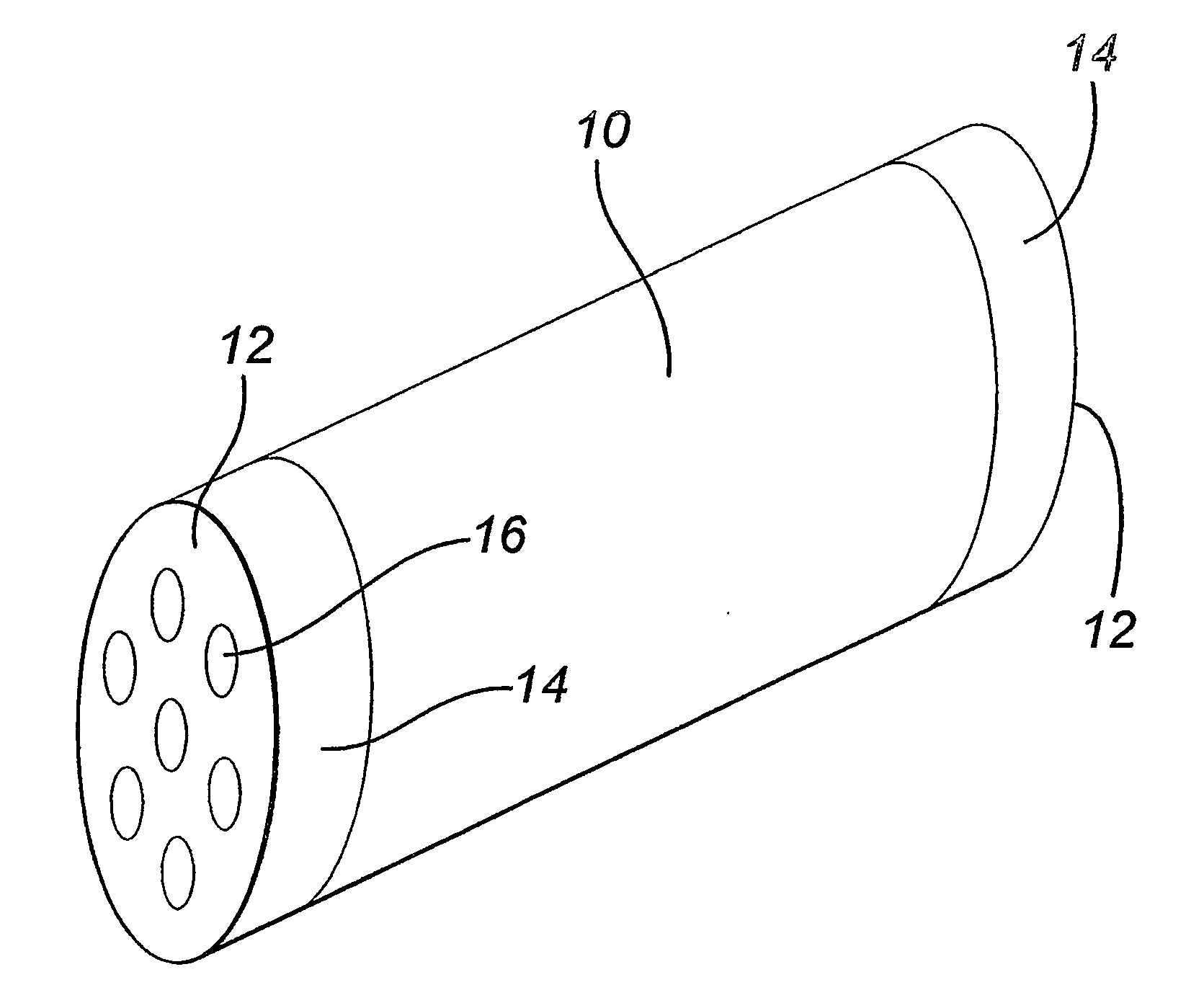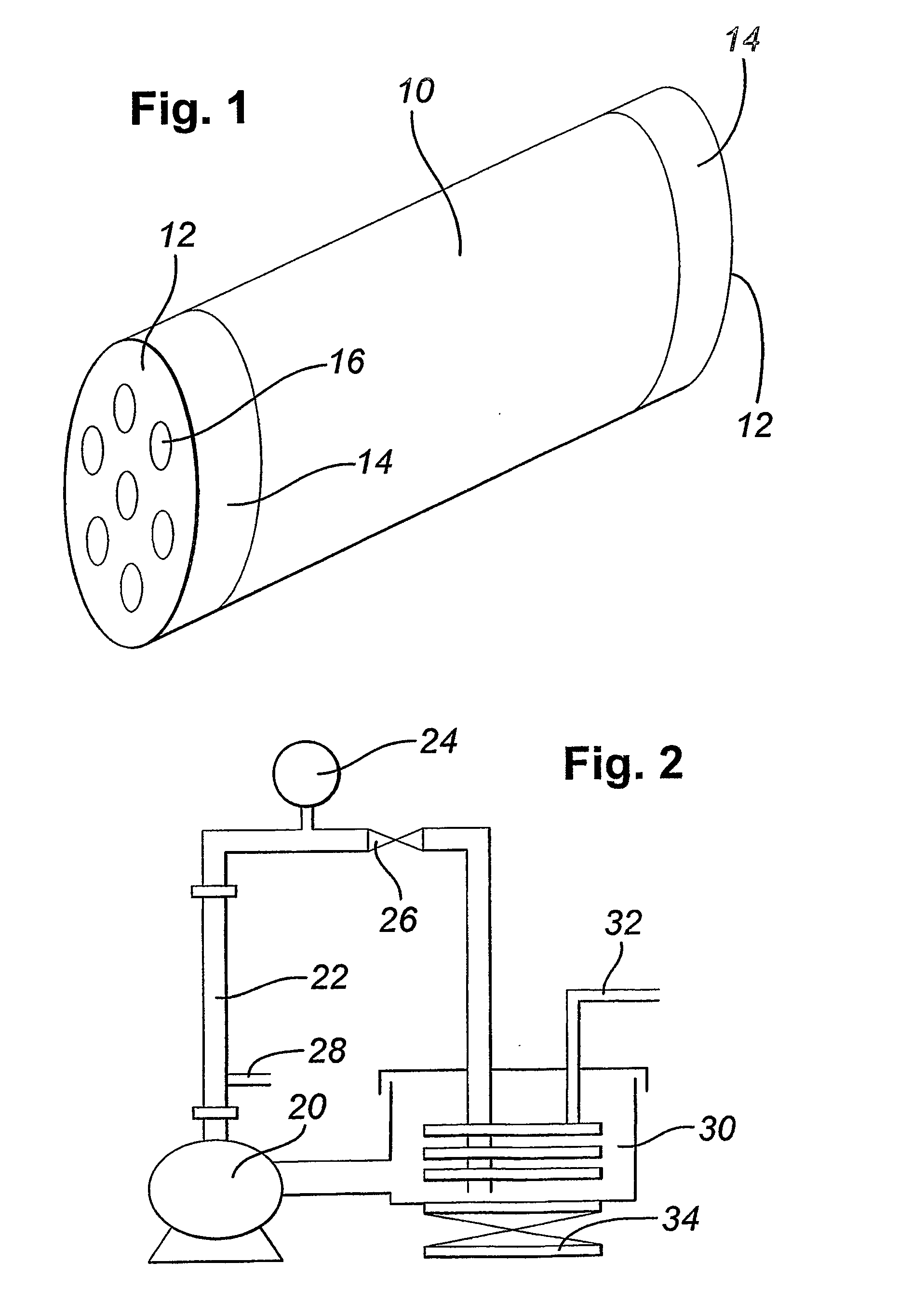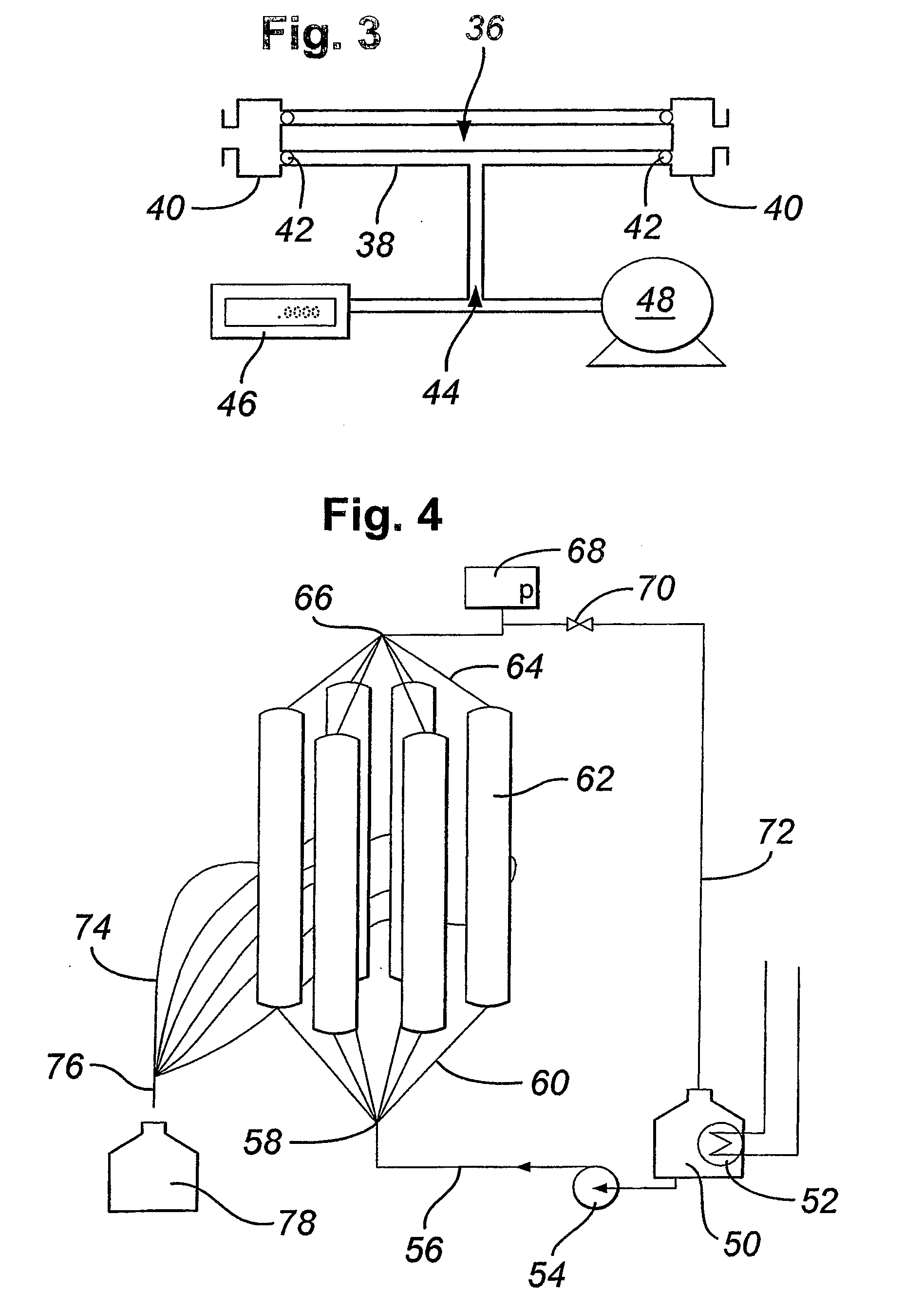Membrane structures and their production and use
a membrane and structure technology, applied in the field of membrane structures, can solve the problems of small value for many purposes, slow and laborious, and inability to provide a substantially defect-free membrane on a larger scale, and achieve the effects of reducing manufacturing costs and parts inventory, reducing the number of monoliths required, and reducing the number of monoliths
- Summary
- Abstract
- Description
- Claims
- Application Information
AI Technical Summary
Benefits of technology
Problems solved by technology
Method used
Image
Examples
example
Monolith Material
[0069]Monolith material which may be used comprises ceramic pervaporation substrates or monoliths based on alumina of porosity 34-39%, density 2.4-2.6 g / cm3, and a pore size distribution with an average of maximum pore size≦7 μm, an average of pores, 10%≦5 μm and an average of pores 50% greater than 2.7-4.1 μm.
[0070]FIG. 1 is a diagrammatic perspective view of a porous monolith 10 having in this instance seven axial conduits 16 opening through opposite end faces 12 of the monolith. Glazed regions 14 cover the end faces 12 and extend partway along at least the outer surface of the monolith as shown to permit fluid-tight O-ring seals to be made to the outer surface of the monolith with a certain amount of end-float to allow for manufacturing tolerances. In this way seals may be made to opposite ends of the monolith 10 so that fluid is forced to flow freely from one end face 12 of the monolith only along the axial conduits 16 to the other end face 12. The extent of cro...
PUM
| Property | Measurement | Unit |
|---|---|---|
| internal diameter | aaaaa | aaaaa |
| thickness | aaaaa | aaaaa |
| thickness | aaaaa | aaaaa |
Abstract
Description
Claims
Application Information
 Login to View More
Login to View More - R&D
- Intellectual Property
- Life Sciences
- Materials
- Tech Scout
- Unparalleled Data Quality
- Higher Quality Content
- 60% Fewer Hallucinations
Browse by: Latest US Patents, China's latest patents, Technical Efficacy Thesaurus, Application Domain, Technology Topic, Popular Technical Reports.
© 2025 PatSnap. All rights reserved.Legal|Privacy policy|Modern Slavery Act Transparency Statement|Sitemap|About US| Contact US: help@patsnap.com



